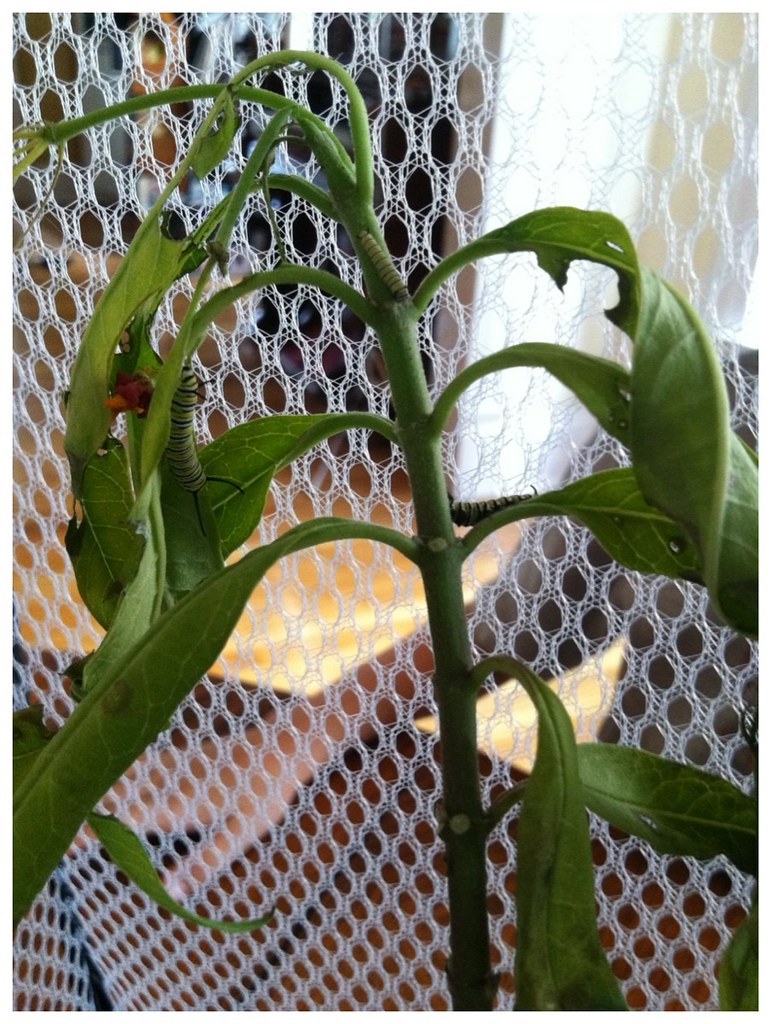Raising your own caterpillars can be so easy and truly riveting for even the youngest of children. Instead of buying a kit and ordering caterpillars that might be nonnative to your area, you can start with monarch butterflies which are native to the continental US and much of South America.
To create an outdoor butterfly habit you need to grow a host plant and a nectar plant. The host plant is where the butterfly lays her eggs and will feed the very hungry caterpillars. We have noticed that if you plant the host plants near nectar plants, the caterpillar will climb down the host plant and make his chrysalis near the nectar plant. He will be ready to drink when he emerges.
Monarchs lay their eggs on milkweed, which is widely available. In fact, many times when you buy milkweed it is already full of eggs. A great nectar plant for monarchs is pentas. If you combine these two you should have the whole life cycle in your yard within a season.


You can get more information about butterfly gardening from the North American Butterfly Association iincluding which other butterflies are native to your area and how to attract them.
If you liked this post, you will love Friday's Movie Night post!
Have you raised caterpillars? Which type?

Your are one resourceful mama I tell you!!! YOu have given me sooo many great ideas, including this one! THANK YOU!!! Have you gone to the butterfly farm near Gainesville? I was thinking of driving up there to get our caterpillars and plants...
ReplyDeleteAnd have a great weekend mama!!
xx oo
Thanks! I have not been there yet - but it on my list. I always think I will hit it when I am driving out of Florida.
ReplyDeleteThis is wonderful, Amy. Going to share it on my facebook page today. My father had a garden much like you are describing in his Florida back yard. He had a small butterfly farm as business but he loved to raise plants and attract all different types of butterflies just for the pleasure of seeing them. I love your idea with the clothes hamper and bringing the milkweed indoors. This is such a creative idea!
ReplyDeleteTotally agree about homeschooling and family learning - it is great!!!! The hamper habitat is brilliant. Much bigger than the one given with our kit.
ReplyDeleteThis is so neat. We've always raised the painted ladies ordered through the mail but you are inspiring me to want to try to find monarch eggs and go this route. This must be so rewarding. I love the New Years story :) Thanks for linking up!
ReplyDelete